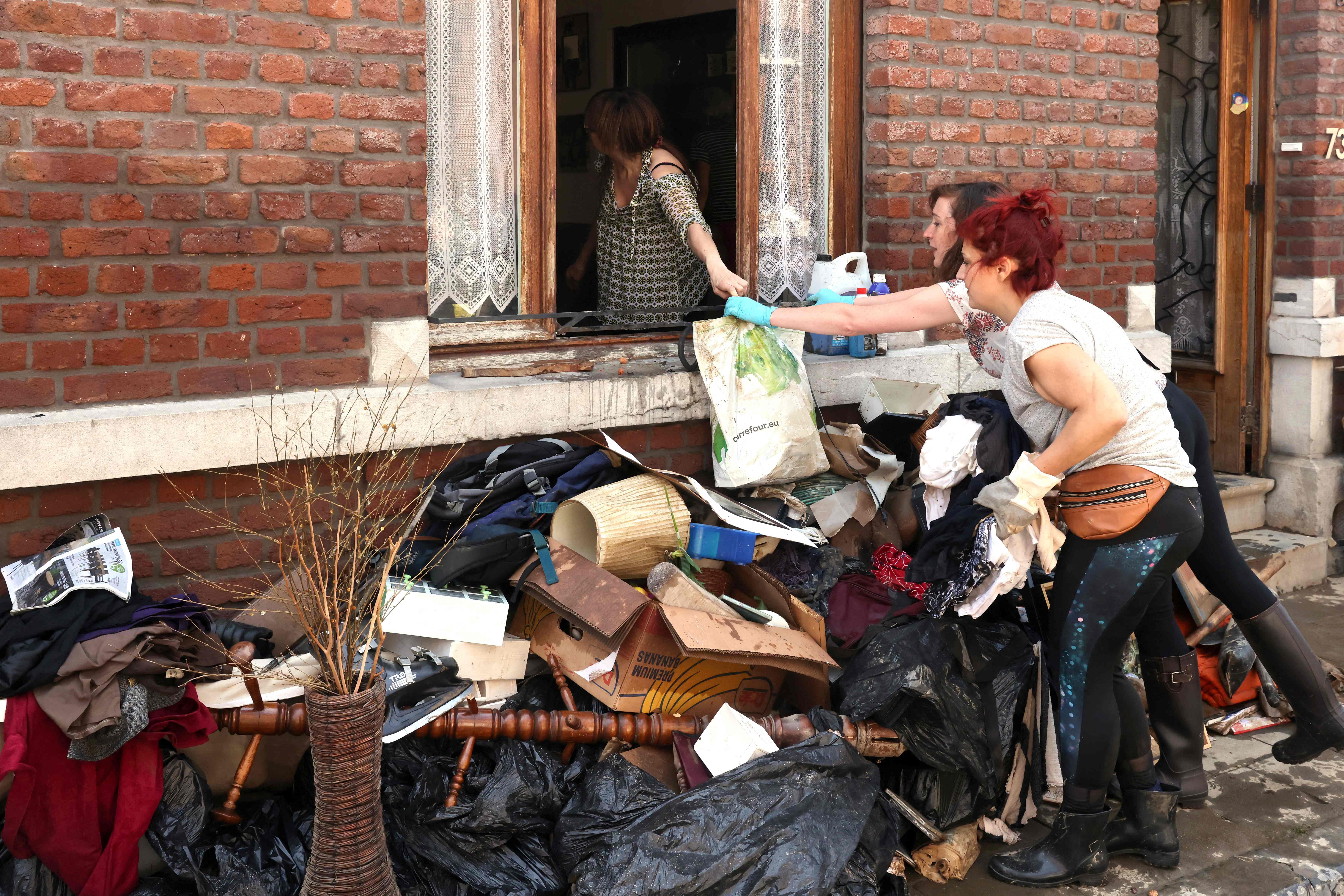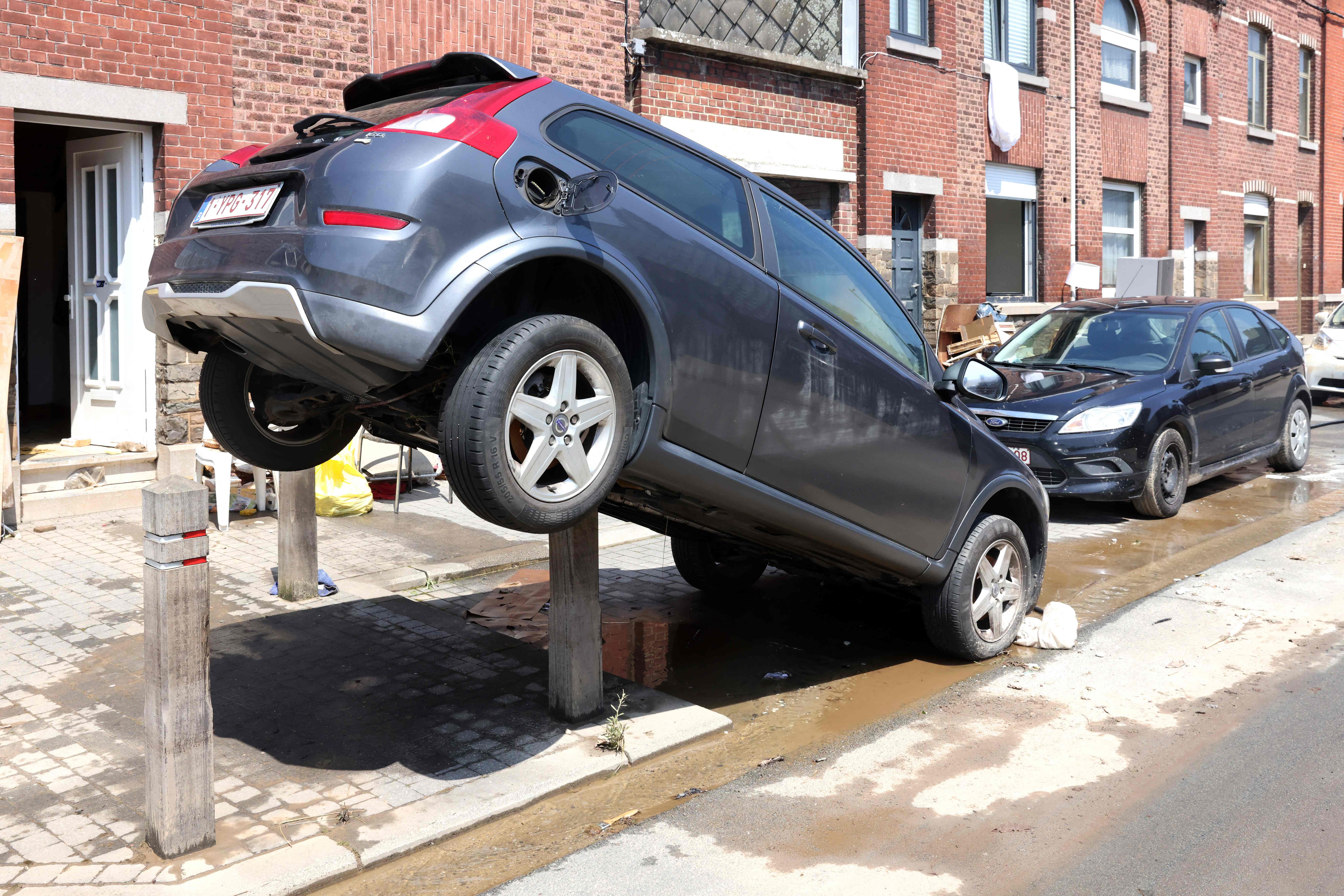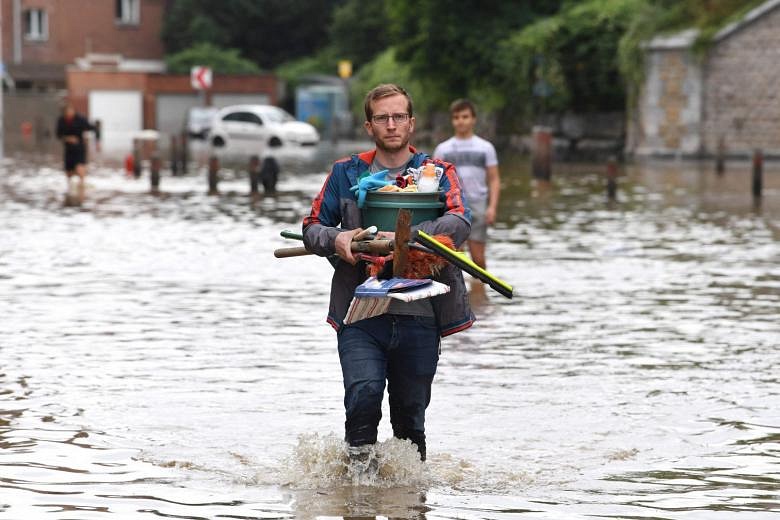ANGLEUR, BELGIUM (AFP) - It could take months to clear up after the worst floods in modern Belgian history - and some local landmarks in the Liege suburb of Angleur may never be the same.
The clouds were clearing on Saturday (July 17) two days after a vast torrent of muddy water ripped through the area, tossing aside cars and pouring into shops and schools.
But the neighbourhood's future, after what Prime Minister Alexander de Croo has called an unprecedented disaster, is not sunny.
"We're probably still going to uncover more catastrophic situations," said senior Liege official Christine Defraigne as police went door-to-door and the official death toll mounted.
Angleur lies on the southeastern edge of Belgium's fourth biggest city, near where the Ourthe river plunges into the mighty Meuse, known as the Maas when it reaches Dutch territory downstream, and drains a vast tact of southern hills.
The narrow valleys of the region are heavily populated and built over, so were soon swamped in a week of intense rain, which experts have linked to the global climate crisis.
Questions will be asked about Belgium's preparedness, warnings from meteorologists seem to have gone unheeded, and waters were already high when Liege ordered but didn't enforce a partial evacuation.
But the citizens of Angleur have more immediate concerns.
At the local nursery school Sophie Djokalaj is close to tears. After a year of coronavirus disruption she was looking forward to welcoming her class of two to four-year-olds back in September.
"There's so much work. I hope we'll be able to open after summer," she sighed, as her daughter and her husband helped her to start the daunting clean-up.
The pink and green walls are spattered with mud, shelves and desks are up-turned in the hallways and toys lie scattered in the debris.
In the main street, tow trucks are pulling away wrecked cars. Huge holes have opened under pavements, now cordoned off behind orange and white warning barriers.


"Everything is ruined," said 44-year-old Olivier Saelen, pointing to the mud that has turned his front room into a swampy riverbed.
"The water rose in just 15 minutes, but it'll take weeks to fix things," he said, before noting philosophically: "Still, people have died, so losing furniture isn't the worst thing."
Two bodies have already been recovered in Angleur, and not everyone is accounted for.
"Since yesterday, all we've heard is sirens and helicopters. As if we needed all this, after the pandemic," said Angela Celliere, 60, mopping stagnant water out of her porch.
Stench of fuel
Stacks of ruined furniture lean forlornly in front of houses, and heating oil leaking into flooded cellars and out into the street fills the air with the stench of diesel oil.
Town librarian Aurelie Nisot was dragging out piles of books swollen with moisture and defaced with mud.
"We've never seen something like this," she said. "A bit of water in the cellars, but this is unique."
One grocer's shop on raised ground was able to open on Saturday, but many local business owners were close to despair.
John Theunis runs the Studio 87 hair salon, which owed its vintage feel to carefully selected furniture.
"I had fold-down chairs from a 1950s cinema in Liege, and a seat from the 1958 Universal Expo in Brussels," the 33-year-old told AFP. "What a waste."

